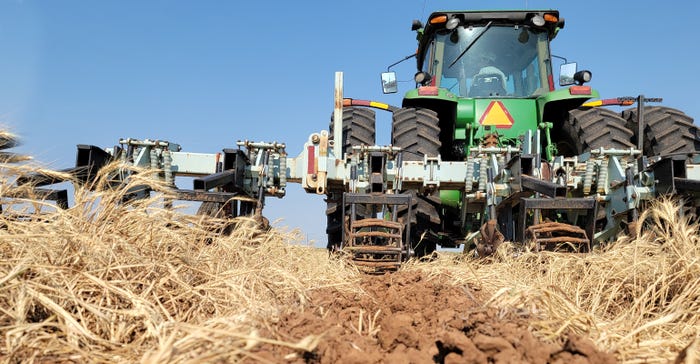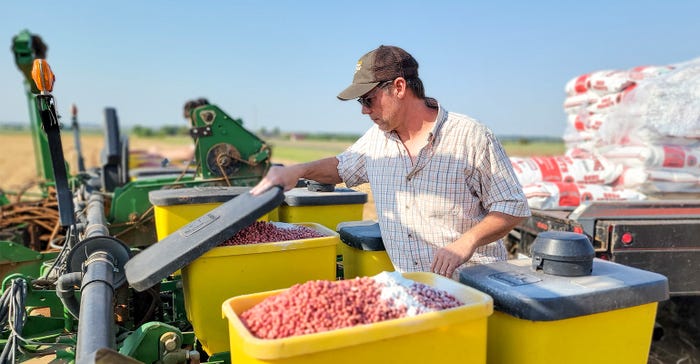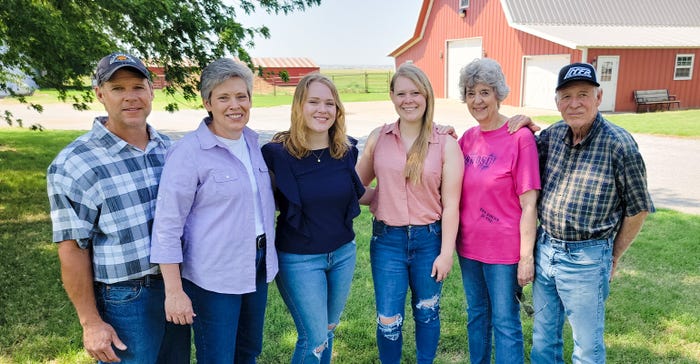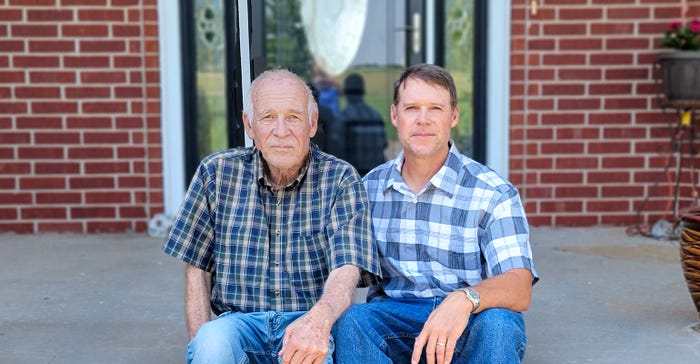
Karl Stutzman, Weatherford, Okla., said good varieties, fertility, and tillage contribute to consistently good peanut yields.
But he credits God for the increase.
Stutzman said success begins with preparing and planting “to the best of our ability. We dedicate it to God and trust him to provide the increase.”
See photo gallery, Karl Stutzman: 2022 PEA winner
It's Stutzman's high yielding, quality peanuts produced using regenerative practices that has earned him the 2022 Peanut Efficiency Award for the Southwest.
Production
Stutzman produces just over 200 acres of irrigated peanuts in western Oklahoma. One of his farms has been in his family for more than 100 years. In 2021, he planted both Lariat and SPAN-17 varieties, with the Lariats averaging about 6,423 pounds per acre and the SPAN-17 averaging 4,823 pounds.
Farm Press met up with Stutzman on his 50th birthday as he was planting his last field of peanuts for the 2022 season. He talked about the keys to good yields.
"I really like Lariat runners,” he said. “They're a longer season variety, so you have to wait it out into October. That can be challenging but I have found it to be rewarding, if you can wait.
"SPAN-17 are a Spanish peanut, so they're a shorter season variety, which gives you flexibility to plant a little later as I am today and still shouldn't push us too far into the fall. They are a small-seeded runner, they grow on a runner-type vine. I prefer a runner vine, they lay out a little flatter and dig and harvest easier than a typical Spanish variety."
Tillage
Stutzman calls himself a tiller. He likes the smell and feel of freshly tilled dirt. "I like to get my hands in the soil. I've been experimenting with row-till for a while, especially in cotton."
For the last three years, he's been integrating this system into peanut production. "It's not new to the peanut industry, but it's new to my system," he said.

Clifford Zook runs Karl Stutzman's Orthman 1tRIPR through his wheat cover. "I don't like to blow on my neighbors. I want to be a good steward, and I don't like my ground to blow if it doesn't have to." (Photo by Shelley E. Huguley)
Last year, Stutzman followed soybeans with peanuts. "I knew better than to follow a legume with a legume, and I had some pod rot issues in my peanuts, so I won't do that again.
"Last year, was a unique year in that we had heavy rain in June. I think that started the pod rot issue much earlier than we were aware of."
This year, we added Abound fungicide in-furrow with our inoculant to help with pod rot.
"Last year, I had one field of Lariats that followed cotton, which fared better. This year, all of my peanuts are following cotton. I wasn't sure how that would work last year, but it worked really well.
Fertility
Good fertility and crop scouting play key roles in Stutzman's peanut production system. "Beck Johnson, our crop consultant, does a super job tracking disease and helping us stay ahead. I try to be out ahead of disease rather than chase it."
Stutzman's fertility program begins with yearly soil tests. "For the last few years, Beck and I have been adding 50 pounds of 0-0-60 and 50 pounds of 11-52-0, in addition to the sample. Our corn silage and cotton take a lot of nutrients out of the soil."

#Plant22: Karl Stutzman, 2022 Peanut Efficiency Award winner, loads SPAN-17. (Photo by Shelley E. Huguley)
Stutzman bales peanut hay for his cow/calf operation. "We’re trying to make sure we add the nutrients back into the soil as needed."
See, Rural doctor prefers country practice, patients
He also pumps about 60 units of nitrogen through the pivot in two passes. The first application is about bloom stage, the second, a couple weeks later.
"We also spread a ton of gypsum per acre at pegging. It helps to loosen the soil, the peanuts come out a little cleaner at harvest, and there's also some beneficial micronutrients in the gyp."
Stutzman plants 90 pounds per acre of SPAN-17 and 100 pounds per acre of Lariats. He applies Primo inoculant, along with 5 ounces of Abound fungicide and 5 ounces of Unlocked.
Harvest
During harvest, Stutzman runs two 4-row diggers and two 6-row combines. "Last year, we had an open fall that made harvest easy," he said.
Harvest is a team effort. His neighbor Clifford Zook primarily runs one combine. His dad and his 22-year-old daughter Erika, who aspires to farm one day, run the other.
"My oldest daughter got her first chance to drive the combine last year. She did really well, even learned how to run the buggy," he said. "I typically run the peanut buggy, so I can be back and forth to the combines. I load the trailers and if I spill them, I get to clean them up."

Stutzman Family: from left, Karl, his wife Brenda, daughters Kayla and Erika, parents Phyllis and Bob. (Photo by Shelley E. Huguley)
Family friend Travis Chupp also assists where he is needed. "He's does it all."
Stutzman purchases his seed from and delivers his peanuts to 4E Peanuts, owned by the Eichelbergers, Jeff and Marla and Doug and Anita. "They're about 4 miles from most of my fields, so it's convenient."
Stutzman appreciates how attentive 4E is during peak times of the season—in the spring, checking to ensure he has enough seed, and in the fall, coordinating when to bring the trailers. "I really appreciate all their efforts that help make planting and harvest go smoothly," Stutzman said.
Family
Stutzman credits a lot of success to his family: his wife Brenda; Erika, who attends Southwestern Oklahoma State University; and Kayla, who attends The University of Oklahoma.
"Brenda is the family practice physician in the nearby rural community of Hydro. She works full-time, yet she's always got a meal ready for me, takes good care of me, and keeps things going. She enjoys helping me move from field to field when she can and she's just always there.
“My daughters are always willing to help with anything. They're always helpful when moving from field to field, driving equipment, and putting cattle back when they get out.
"My nephew, Zachary Martin, has started helping me, as well."
Stutzman's father, Bob, also plays a vital role. "My dad's a special guy. I've probably never been around anybody that works harder than he does. He's always set the standard. He said we're never any closer than we are right here, so when something needs to be fixed, we need to do it right. I appreciate that.

Father and son: Bob and Karl Stutzman. "He's taught me everything I know." (Photo by Shelley E. Huguley)
“He's a doer. I'm kind a dreamer and a thinker. Sometimes I'm here and there and yonder in my thoughts. My dad puts his head down and just gets it done. He has taught me everything I know."
Conservation
Stutzman is careful with fertility and weed control. “I realize that fertilizer and chemicals extremely expensive this year. It's scary to think about buying them because we don’t know what's going to happen. It's also scary to skimp because of how far it puts us behind and where it takes us. So, we try to do the best we can do with what we have.
"It's a real privilege to be a farmer," Stutzman said. "Scripture tells us we're caretakers of God's creation, so it's His. To be a good steward, we want to take care of the land to the best of our ability, not let it blow or wash away.
"We want to leave this land better than we found it."
About the Author(s)
You May Also Like






